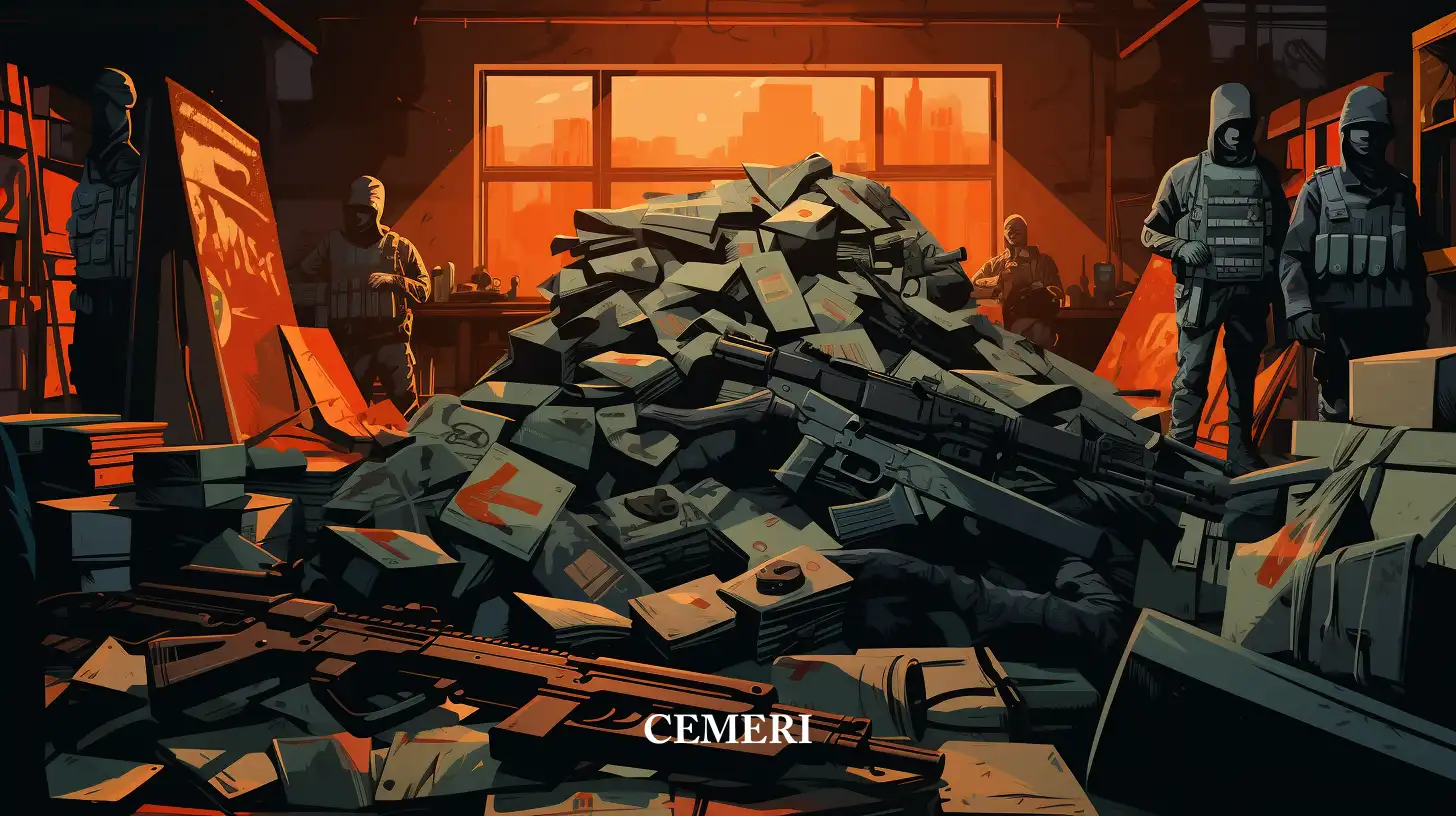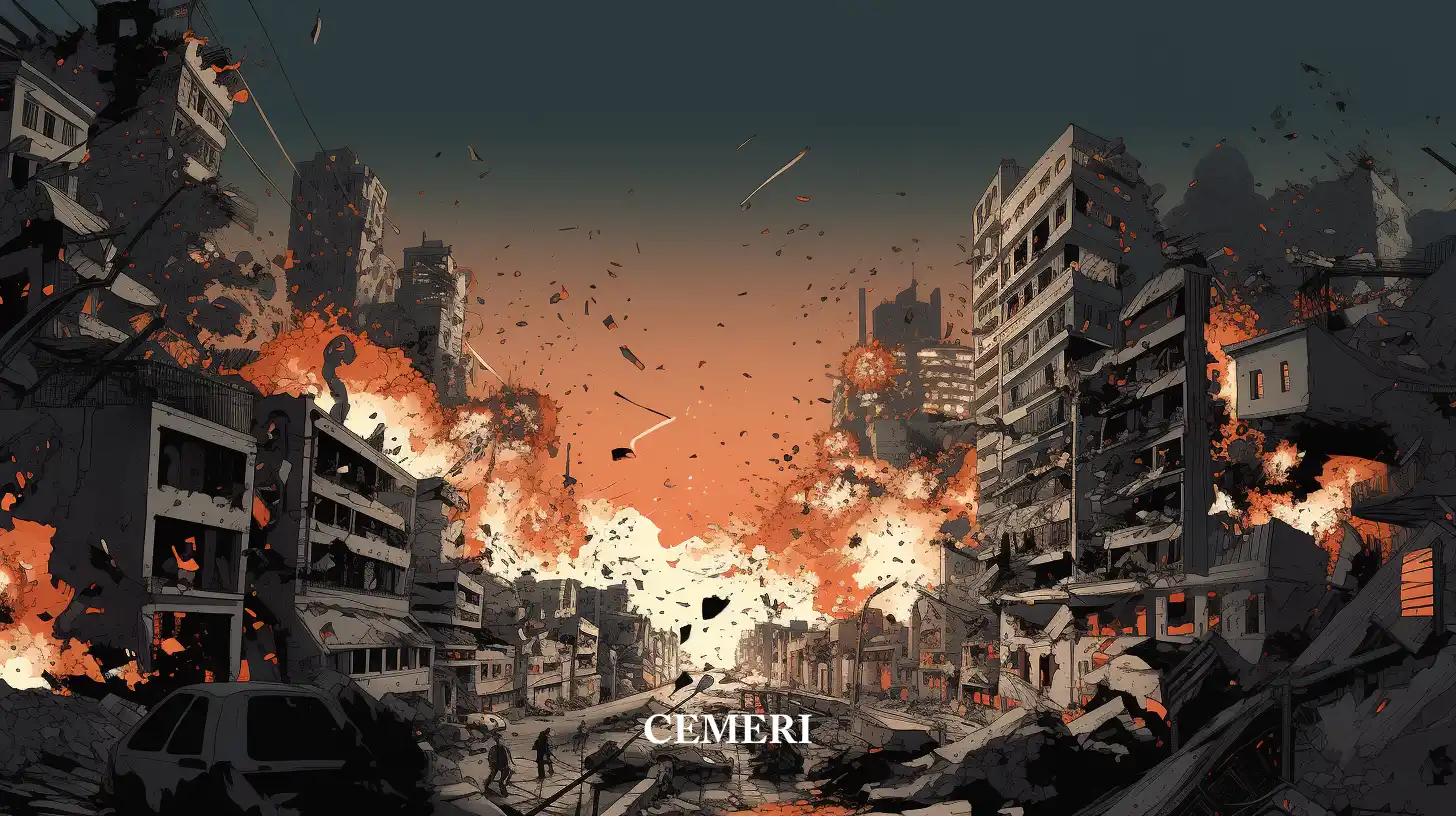Encyclopedia
Mariana Muriel González Rul
What is the arms trade?
- The global arms trade grows exponentially as a result of major international conflicts. What are its implications?

The arms race and the arms trade have always been a relevant factor for international security. After the world wars, and especially after the Cold War period, there are more and more conversations that revolve around disarmament; however, it is a business that moves close to 100,000 million dollars per year (Bowler, 2018). After multiple attempts at treaties and disarmament policies, it continues to be a relevant and powerful business. In this article, this topic will be investigated, raising its implications, the Arms Trade Treaty, and finally some considerations on the current context.
Arms trade implications
According to figures from the Stockholm International Peace Research Institute (2021) (hereinafter SIPRI), Asia and Oceania represents 42% of global imports; followed by the Middle East with 33%; Europe with 12%; Africa with 7.3%; and finally America with 5.4% (data from 2016-2020). The latter is relevant, since the United States represents the largest arms exporter with 37% (SIPRI, 2021); It is an indicator of where these weapons are located and on whom their effects fall.
Take, for example, the conflict in Yemen. Since 2015, this Middle Eastern country has been at war, the coalition led by Saudi Arabia intervened in the capital, Sená, to restore the government (Amnesty International, s/f). Thus generating a long civil conflict characterized by bombardments of civilians; food lock; poor medical care; obstacles in humanitarian assistance; as well as sexual violence and forced disappearances (Guterres, 2021).
The Yemen conflict has been largely fueled by a number of countries that continue to supply weapons to the Saudi-led coalition forces. These sales already add up to more than 18,000 million US dollars since the conflict began (Amnesty International, s/f.).
So, this conflict is characterized by a high involvement of foreign weapons, calls have been made to reduce the sale of weapons to this nation; however it remains latent. Of course, this is not the only case of this nature, South Sudan, in North Africa, which entered a civil war in 2013, although in 2018 a peace treaty was signed between President Salva Kiir and his opponent Riek Machar, agreeing to govern jointly, there is still a presence of small arms and light weapons that maintain a situation of violence in the territory (DW News, 2021). This has various humanitarian, social, economic, and national and regional security consequences. In this case, illicit trade is mainly observed, affecting especially vulnerable groups, especially children (Security Council, 2021).
This shows another important implication of the arms trade, because although most firearms are originally produced in a regulated and legal manner, it is common for them to later end up in the cycle of illegal trafficking. The UNODC (2020) carried out different data collection activities, and it was found that the largest number of weapons seized in 2017 were from the American continent, so although it is the continent with the least regulated imports, it receives high amounts of illicit weapons. It is essential to take this vertebra of the arms trade into account, as it extends the dimensions of the conversation.
Arms Trade Treaty
Taking the above into account, the need to create a mechanism to regulate the situation became evident. In this way, in 2014 the Arms Trade Treaty (ACT) entered into force, it fills an important legal gap that existed, because although there were regulations on weapons of mass destruction, there was no mandatory compliance regime for of a conventional type (Center for International Studies: Gilberto Bosques, 2014).
The first article establishes within its purposes and objectives "Establish common international standards as strict as possible to regulate or improve the regulation of the international trade in conventional arms", as well as "Prevent and eliminate the illicit traffic of conventional arms and prevent their diversion" (United Nations, 2013, p. 3). This agreement was a historic moment, it not only fills the existing legal vacuum, but also lists a series of state obligations for both importers and exporters; thus generating a comprehensive and highly relevant approach.
What is happening now?
SIPRI records that from the period 1981-1985 to 2021 there was a significant decrease in these transactions, especially in 2020. In reality, the US, France and Germany increased their arms trade, but as there was an evident drop in the exports from Russia and China, the increase was offset. Despite the above, the reality is that it is too soon to know if this will be generalized or if it was rather due to external situations such as the pandemic. In any case, it is extremely important to maintain attention on this issue, it will be relevant to consider, for example, the way in which the recent Russia-Ukraine conflict could increase the flow of arms. It continues to be a latent problem that needs more attempts at international cooperation and state commitment.
Sources
Amnistía internacional. (n.d.). Comercio de armas. Amnistía Internacional. Retrieved February 16, 2022, from https://www.es.amnesty.org/en-que-estamos/temas/armas/
Amnistía Internacional. (2013, March 11). Global Arms Trade Treaty – a beginners’ guide. Amnesty International. Retrieved February 17, 2022, from http://amnesty.org/en/latest/news/2013/03/global-arms-trade-treaty-a-beginners-guide/
Bowler, T. (2018, May 11). Los 3 factores que hacen del comercio global de armas un negocio cada vez más rentable. BBC. Retrieved February 16, 2022, from https://www.bbc.com/mundo/noticias-internacional-44078485
Centro de Estudios Internacionales: Gilberto Bosques. (2014, abril 2). Alcances y límites del Tratado sobre Comercio de Armas (ATT). Centro Estudios Internacionales. Gilbert Bosques.
Consejo de Seguridad. (2021, septiembre 30). Armas pequeñas y ligeras. Informe del Secretario General. Consejo de Seguridad. Naciones Unidas.
DW News. (2021, July 9). Sudán del Sur cumple 10 años marcados por el conflicto. DW. Retrieved February 16, 2022, from https://www.dw.com/es/sud%C3%A1n-del-sur-cumple-10-a%C3%B1os-marcados-po r-el-conflicto/a-58215140
Guterres, A. (2021, September 8). Yemen: Todas las partes habrían cometido crímenes de guerra, dicen los expertos. UN News. Retrieved February 16, 2022, from https://news.un.org/es/story/2021/09/1496492
Naciones Unidas. (2013). Tratado sobre el Comercio de Armas. Naciones Unidas.
Ofina de las Naciones Unidas contra la Droga y el Delito (UNODC). (2020). Estudio Mundial sobre el Tráfico de Armas de Fuego 2020. UNODC Reasearch.
Srockholm Internacional Peace Research Institute. (n.d.). International arms transfers. SIPRI. Retrieved February 16, 2022, from https://www.sipri.org/research/armament-and-disarmament/arms-and-military-expend iture/international-arms-transfers

